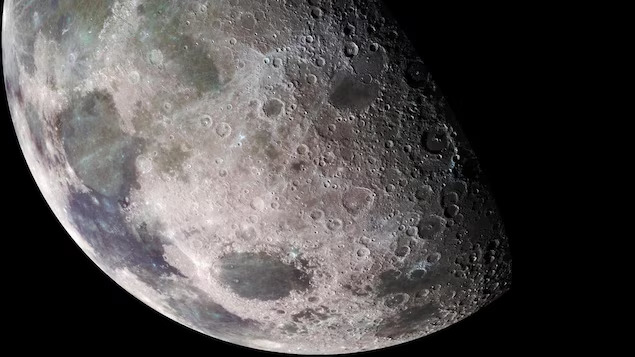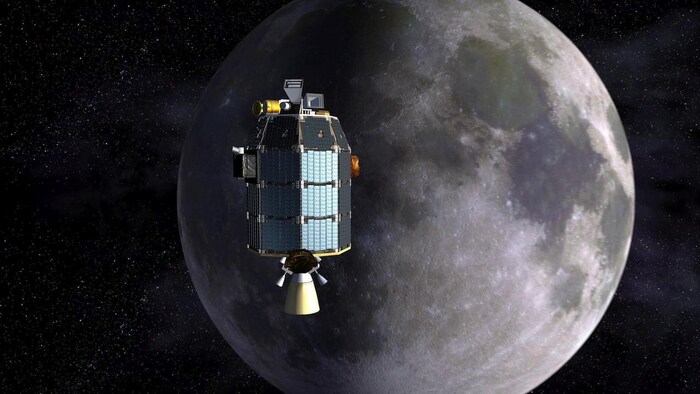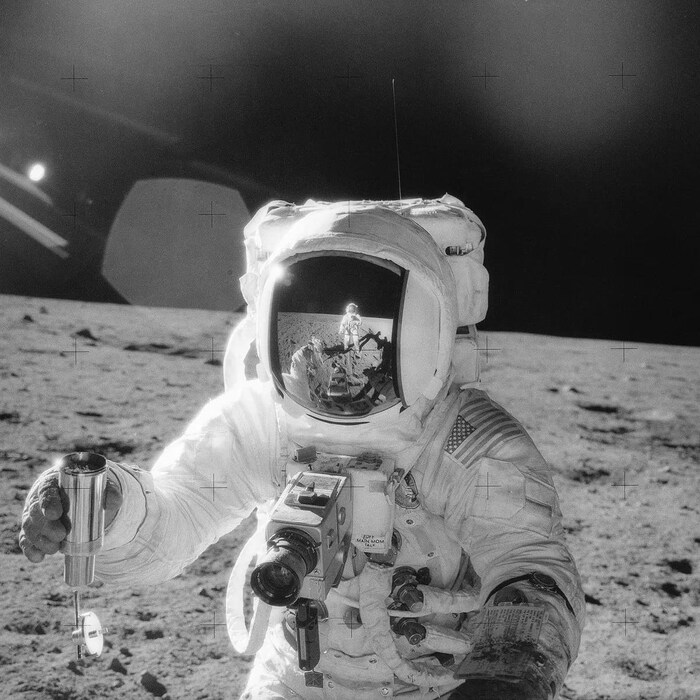Science
The moon has an atmosphere (sort of). Now, astronomers have nailed down why and how
By Nicole Mortillaro, CBC News, RCI
New study looks at role of solar wind and meteorites

A new study suggests the very thin atmosphere on the moon is mainly supported by meteorite impacts that kick up atoms that then become trapped around it. Photo: NASA (via RCI)
The moon may be our constant companion, but there’s still a lot we have yet to understand about it.
For example, it was only during the Apollo missions in the 1960s and ’70s that we discovered it has an atmosphere, tenuous as it is.
People do not even know that the moon has an atmosphere,
said Nicole Nie, an assistant professor in MIT’s Department of Earth, Atmospheric and Planetary Sciences and the author of a new study about the moon.
Technically speaking, a lunar atmosphere is not really an atmosphere. [As] scientists, we call it an exosphere, just because it’s very, very thin.
But it’s there, and scientists have had theories about what is supplying this thin atmosphere, which is made up of helium, argon, neon, ammonia, methane and carbon dioxide, as well as some sodium, potassium and rubidium.
Now, Nie and co-authors of a new study (new window) published in Science Advances provide further evidence to support the theory meteorites are responsible for at least some of its atmosphere.
Getting into the dirt
The main driver for the lunar atmosphere was believed to be something called space weathering, which includes the vaporization of the lunar surface as meteorites slam into the moon. Another factor is ion-sputtering,
which comes from the sun’s solar wind, a flow of particles that travels outward into the solar system at around 1.6 million km/h.
Scientists believe that as the charged particles carried by the solar wind reach the moon, they hit the surface and then transfer energy to the atoms contained in the soil, sending those atoms sputtering about, which ends up creating a thin atmosphere.
Some of that information was collected by a NASA satellite mission to the moon called the Lunar Atmosphere and Dust Environment Explorer (LADEE), which orbited from 2013 to 2014.
But Nie and co-authors wanted to get down and into the dirt, looking at the moon’s regolith, which is sometimes referred to as soil (although soil tends to contain organic matter).
The researchers were able to analyze 10 samples from the Apollo missions.

An artist depiction of NASA’s Lunar Atmosphere and Dust Environment Explorer (LADEE) observatory as it approaches lunar orbit.
Photo: NASA
It was only 100 grams, so there wasn’t room for error (you don’t want to make a mistake and waste precious Apollo samples). In fact, the process was so difficult, Nie said it took her three years to just develop a method to test the samples, which involved crushing them and dissolving the fine remaining powders in acids.
The researchers looked specifically at potassium and rubidium, two elements that would vaporize easily in both ion-sputtering and meteorite impacts.
Here’s where the science gets a little deeper: each of those elements — potassium and rubidium — come in different forms, called isotopes. There can be lighter isotopes and heavier isotopes. The researchers’ theory was that lighter ones would, presumably, be lofted upwards, while heavier ones would remain in the soil.
They concluded the regolith held mostly the heavy isotopes of both elements, and that vaporization of these rocks was likely the main process by which the atoms are sent upward (think fast, hot rock slamming into more rock).
And since the moon is constantly being pelted by even small meteorites — called micrometeorites — this thin atmosphere is just replenished again and again.

One of the astronauts from the Apollo 12 mission is seen on the surface holding a container of lunar soil; the other astronaut is seen reflected in his helmet. Apollo 12 safely returned to Earth on November 24, 1969, with 34 kilograms of rock samples.
Photo: NASA/MSFC
What it means for the future
This is important because with ion-sputtering, most of those atoms would escape into space. However, with meteorites vaporizing the rocks, the majority would remain.
In fact, the recent study found 70 per cent of the lunar atmosphere is a result of these meteorite impacts.
Nie is excited about what this means for studying samples collected from other bodies, like asteroids. For example, samples from the 4.5-billion-year-old asteroid Bennu were returned to Earth last September.
I think it provides a framework for future studies,
she said. We provide a mathematical model for people to use, and then they can analyze the samples, and then they can use our model to understand the space weathering processes on other bodies. Because for each body, the processes might be different.
Myriam Lemelin, an associate professor at the Université de Sherbrooke’s department of applied geomatics who wasn’t involved in the study but is involved with several lunar missions (including Canada’s upcoming rover), said she’s excited about the prospect of future analysis on other locations on the moon.
The samples that were analyzed in this study, and in the past studies, mostly focus on the equatorial region of the moon,
she said.
The upcoming missions will be targeting the south polar region. Based on what we can see in the orbital data sets, we think space weathering is less intense in the polar region than the equatorial region. So the samples that will be brought back from the south polar region can definitely be used to look into the same isotopes and see if we can measure different things.
This article is republished from RCI.





















